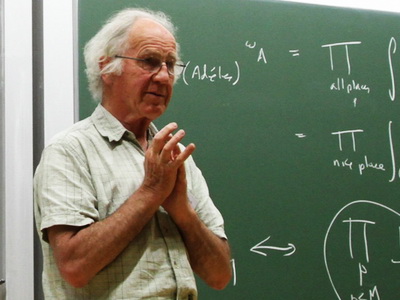
Bryan John Birch
25 września 1931
Bryan John Birch F.R.S. (born 25 September 1931) is a British mathematician. His name has been given to the Birch and Swinnerton-Dyer conjecture.
He was born in Burton-on-Trent, the son of Arthur Jack and Mary Edith Birch. He was educated at Shrewsbury School and Trinity College, Cambridge. He married Gina Margaret Christ in 1961. They have three children.
As a doctoral student at the University of Cambridge, he was officially working under J. W. S. Cassels. More influenced by Harold Davenport, he proved Birch's theorem, one of the definitive results to come out of the Hardy?Littlewood circle method; it shows that odd-degree rational forms in a large enough set of variables must have zeroes.
He then worked closely with Peter Swinnerton-Dyer on computations relating to the Hasse?Weil L-functions of elliptic curves. Their subsequently formulated conjecture relating the rank of an elliptic curve to the order of zero of an L-function was a major influence on the development of number theory from the mid-1960s onwards. He introduced modular symbols in about 1971. As of 2006 only partial results have been obtained.
In later work he contributed to algebraic K-theory (Birch?Tate conjecture). He then formulated ideas on the role of Heegner points (he had been one of those reconsidering Kurt Heegner's original work, on the class number one problem, which had not initially regained acceptance). Birch put together the context in which the Gross?Zagier theorem was proved; the correspondence is now published.
Birch was a visiting scholar at the Institute for Advanced Study in the fall of 1983. He was elected a Fellow of the Royal Society in 1972; was awarded the Senior Whitehead Prize in 1993 and the De Morgan Medal in 2007 both of the London Mathematical Society. In 2012 he became a fellow of the American Mathematical Society.

